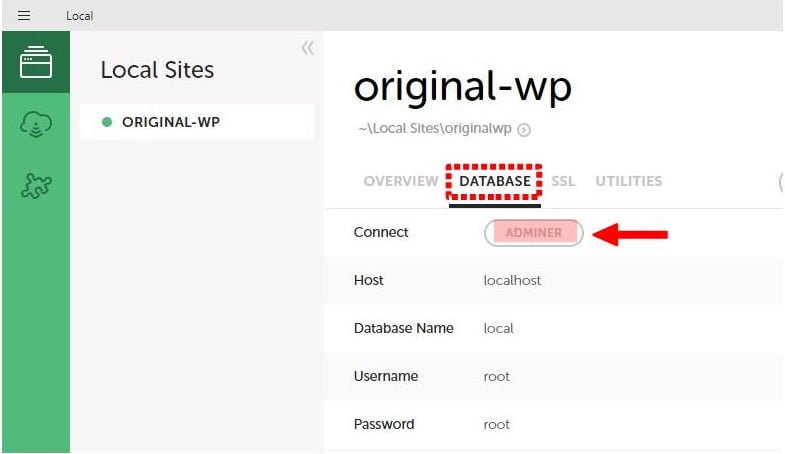

#LOCAL BY FLYWHEEL MYSQL CODE#
If, for some reason, you needed to change the DB_HOST value for just when the code is being run through Tinkerwell, there is a way to do that. This DB_HOST value should work in both Tinkerwell and in Local by Flywheel. When you now use Tinkerwell it should connect correctly. The location of the socket file can be found in the website’s settings in Local by Flywheel under the Database tab:Ĭopy that path, prepend “localhost:/” to the front of it, and use it for the DB_HOST value in wp-config.php. It is possible to point localhost to a socket file in wp-config.php, like this: define( 'DB_HOST', 'localhost:/Users/user/Library/Application Support/Local/run/hprYVZH4q/mysql/mysqld.sock' ) Local by Flywheel sets up the database host with this line: define( 'DB_HOST', 'localhost' ) Furthermore, Local by Flywheel uses Socket to connect to MySQL and not simply the server address that I was most familiar with.įortunately, it turns out that there is a way to set the wp-config.php to use a socket file to connect to the database. The database is running on the virtual machine, not on the host. Tinkerwell is running on the host machine, not the virtual machine provided by Local by Flywheel, so when it tries to connect to the DB_HOST “localhost,” it will fail.

The problem with this approach, from the perspective of using with Tinkerwell, is that Tinkerwell uses the wp-config.php file to determine the database connection. Local by Flywheel provides a local development environment for WordPress by using virtual machines.
#LOCAL BY FLYWHEEL MYSQL PRO#
However I recently changed my local hosting tool from MAMP Pro to Local by Flywheel.

The Tinkerwell interface.Īs you can imagine, trying out different properties in the $args array would be much easier in Tinkerwell than the process described earlier of editing a page on my site. Tinkerwell has more features than I will go into now but the way I most often use it is by typing my PHP into the editor on the left-hand side of the window, clicking the run button, and seeing the results on the right-hand side of the window. Instead of repeating all of these steps Tinkerwell will allow me to just run commands directly. That would send me scrambling to the Web Inspector’s Network tab. Then there are situations where maybe I am trying to load information in using Ajax and, for some reason, am just getting a JavaScript error. I could var_dump values or use XDebug but those add even more little steps to the process. This set of steps also assumes that I have code in place to view the results I am looking for.

What do I like so much about Tinkerwell? Well, let’s look at how I might have normally tweaked code in the past. It is like Tinker for Laravel but works with other PHP projects like WordPress. For those not familiar with Tinkerwell, it is an application that allows you to run and test PHP code and immediately see the results. This topic was modified 1 year, 10 months ago by dearfrench.I have been using a wonderful web development tool, Tinkerwell, in my workflow to test and refine queries and code while I build out websites. So this is my understanding that the filename should be mysql.socket in my case rather than mysql.sock.īut still, I can’t find this file on my computer (I searched inside Local\resources\extraResources\lightning-services\mysql-8.0.16+3 as well as in the folder of my local site).Ĭould you shed some light on this for me? The connection details for this database are available from the Local by Flywheel app on the Database tab: With these details you can use mySQL Workbench to connect and restore the database. > I went through the solution 2 but I can’t find the file mysql.sock. Once you have this backup file, you need to restore it to the Local by Flywheel database. > I tried the solution 1 but it didn’t fix the problem.
#LOCAL BY FLYWHEEL MYSQL HOW TO#
Please read our Knowledge Base article for steps how to resolve it.” When installing the plugin locally using Local by Flywheel, I get the message “MailPoet Error: Unable to connect to the database (the database is unable to open a file or folder), the connection is likely not configured correctly.


 0 kommentar(er)
0 kommentar(er)
